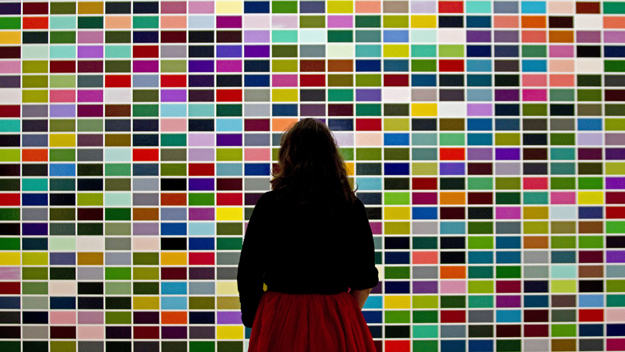High School Visual Arts Programs Help Students Earn Scholarships
 (Photo Credit: Joel Saget/GettyImages)
(Photo Credit: Joel Saget/GettyImages)
This article is presented in partnership with CA Lottery.
High school kids feel tremendous pressure to already have it all figured out. College and next steps loom large and competition has never been fiercer. The start of each day at school typically brings together stressed-out kids and teachers working hard to guide and teach them. The Visual and Performing Arts Content Standards for California Public Schools (PDF) provide a powerful tool for educators, striving to tease out excellence in their students while engaging them powerfully in meaningful study. They also enable students to learn about the world around them while they learn about themselves.
When the Student Becomes the Teacher
Pablo Oliveros is Eagle Rock High School's Arts Department Chair. He is also a former student of the school. The Los Angeles County school has been home to Oliveros for much of his professional life and he's seen many changes in the local landscape during that time. "This part of Los Angeles County has a lot of artists living in the community, so the kids who come to school here experience art in a very personal way and see it as a legitimate career choice," says Oliveros, who has been teaching at the school for five years. "During my time here, I've had at least a dozen kids earn either full or partial scholarships to four-year universities or private art universities in California and neighboring states."
Providing Clarity, Tolerance and Vision
The visual arts in grades nine through 12 help kids hone processing skills and acquire analytic thinking, both powerful tools for making personal and professional decisions. Areas of focus stressed in class include:
- Identifying similarities and differences in art expression and purpose in select cultures.
- The role and influence of technology on contemporary art.
- Articulation about personal beliefs, cultural biases and political contexts that affect the interpretation of messages found in various art forms.
- Formulation and support of personal positions about aesthetic and cultural value, after considering the views of others.
Eagle Rock is a magnet school for the arts, but not all of Oliveros's students pursue art careers after graduation. "I see it every day. Kids learn other subjects better because of the emphasis here on art," says Oliveros. "Perspective drawing is directly linked to geometry. Dance is kinesthetic and brings football players and cheerleaders to drama and a different kind of movement. Art of all kinds helps children think and learn."
Corey Whelan is a freelance writer in New York. Her work can be found at Examiner.com.




